Continued urbanization across the United States means that cities grow in size every year. This comes with more and more lights, which has dire consequences for our night skies. Luckily, the vastness and variety of the U.S. ensures that there will always be remote areas where artificial light doesn’t exist.
In a way, an obstructive view of the stars and Milky Way is the most pristine and spiritual thing on Earth. Stars are, after all, the source of stories and myths, used for millennia as both a compass and a calendar.
Even though most people no longer have any connection with the night sky, seeing the Milky Way in national parks will leave no one undisturbed. It stirs up something deep inside us.
There are literally dozens of International Dark Sky Parks in America, places where you can tilt your head upward and see the Milky Way, constellations and other celestial objects. This includes several dark sky national parks.
In this post, I’ll talk about the best national parks for stargazing in the U.S. First of all, though, let me explain what International Dark Sky Parks are exactly…
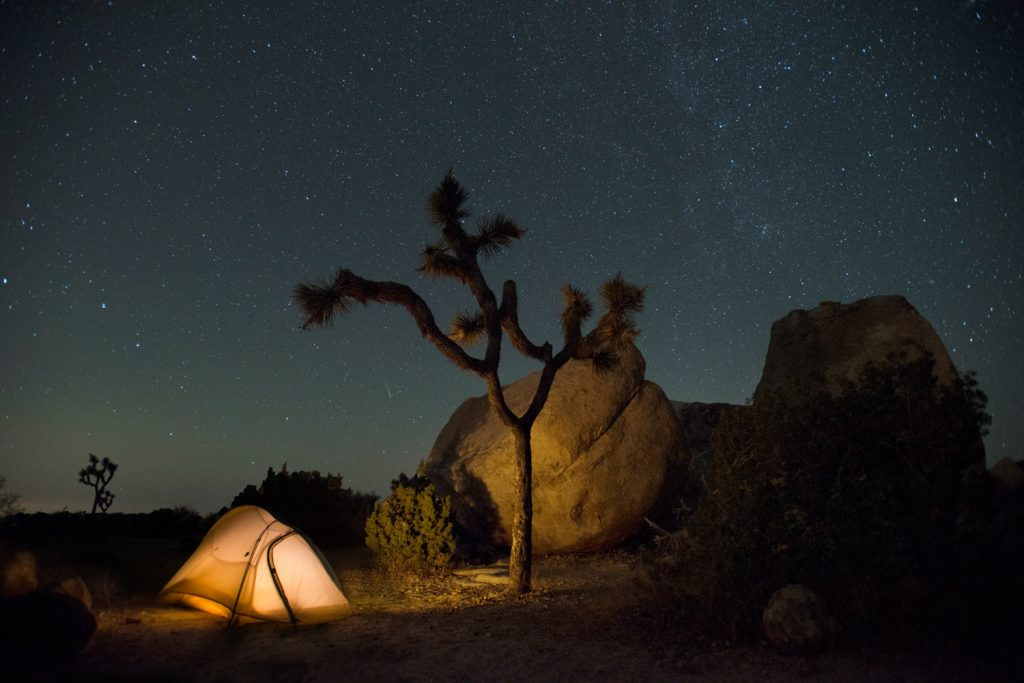
This best national parks for stargazing post contains affiliate links. You can read more about our Terms of Use / Disclosure here.
Contents
- What Are International Dark Sky Parks?
- 16 Best USA National Parks for Stargazing
- Arches National Park, Utah
- Big Bend National Park, Texas
- Black Canyon of the Gunnison National Park, Colorado
- Bryce Canyon National Park, Utah
- Canyonlands National Park, Utah
- Capitol Reef National Park, Utah
- Death Valley National Park, California
- Glacier National Park, Montana
- Grand Canyon National Park, Arizona
- Great Basin National Park, Nevada
- Great Sand Dunes National Park, Colorado
- Joshua Tree National Park, California
- Mesa Verde National Park, Colorado
- Petrified Forest National Park, Arizona
- Voyageurs National Park, Minnesota
- Zion National Park, Utah
- Other Amazing National Parks for Stargazing
- Tips for Stargazing in National Parks
- Full List of U.S. Dark Sky Parks
- More National Park Attractions / Activities
What Are International Dark Sky Parks?
Pollution doesn’t only include trash and waste, smoke and gases. Light pollution is one of the most widespread types of pollution on Earth. While it might not directly affect air, soil or water quality, it does have a huge influence of the behavior of wildlife.
The International Dark-Sky Association (IDA) is dedicated to protecting environments, whether they’re urban or wilderness areas, against light pollution.
The International Dark Sky Parks are a major part of their cause. According to the IDA website, an International Dark Sky Park is…
…a land possessing an exceptional or distinguished quality of starry nights and a nocturnal environment that is specifically protected for its scientific, natural, educational, cultural heritage, and/or public enjoyment.
Those lands can be either publicly or privately owned. In the latter case, the owner of the land has to allow permanent and ongoing public access to the specific IDA-designated areas.
While other parks and preserves protect ecosystems, wildlife and natural features against development and pollution, the International Dark Sky Parks are a sanctuary for the stars.
16 Best USA National Parks for Stargazing
The vast majority of the best U.S. national parks for stargazing are in the western part of the country. This is no coincidence, since the West is still home to vast areas of undeveloped, wild lands.
That’s also where you’ll find the most spectacular national parks—examples are Yosemite, Grand Canyon, Yellowstone and Mount Rainier.
Most of the best night sky viewing in national parks takes place in deserts or on canyon rims. Again, not a coincidence. These are the places least suitable for urban development.
They’re remote, far removed from the nearest major city. As such, light pollution is essentially non-existent there—they’re ideal for star viewing.
Arches National Park, Utah
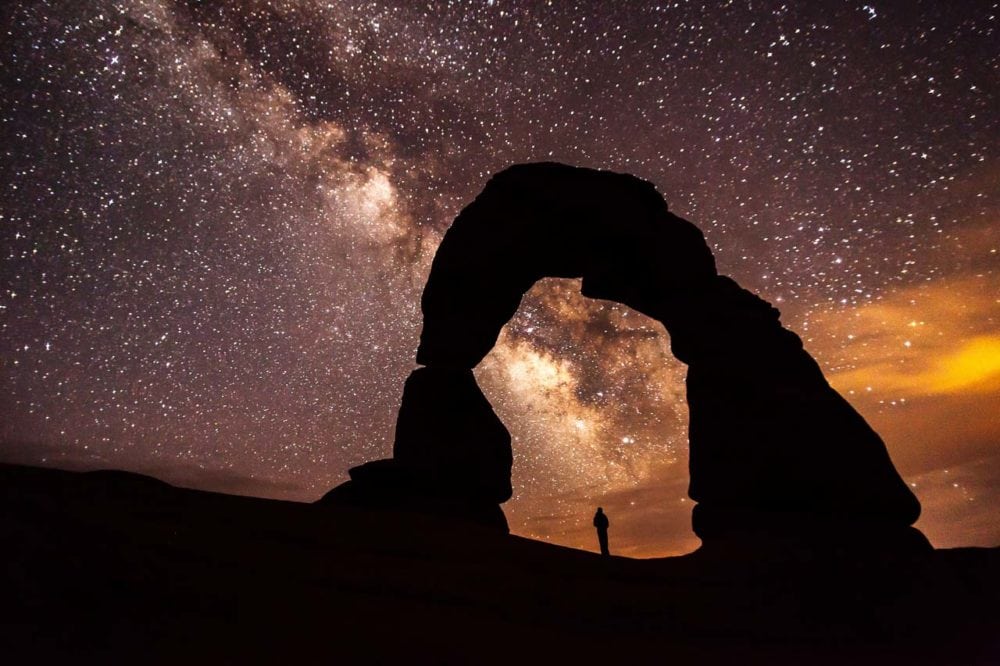
Along with other Colorado Plateau national parks and monuments, Arches National Park preserves one of the darkest night skies in the contiguous United States.
This remote park in southeastern Utah is relatively free from urban light pollution, allowing visitors to enjoy a brilliant nocturnal show above.
The deep darkness of a moonless night in Arches National Park reveals thousands of stars, including the magnificent Milky Way, but also planets and faraway galaxies. It is so dark here, and the views so clear, that you might even see Saturn’s rings with a pair of regular binoculars.
When the weather’s clear and the moon’s new or hasn’t risen yet, you can do some phenomenal stargazing pretty much anywhere in the park. However, the farther you drive up the scenic Park Road and, as such, the farther away from Moab you go, the darker the night skies will be.
Popular locations for stargazing in Arches National Park are The Windows area, the Garden of Eden viewpoint and the Balanced Rock picnic area.
If you don’t mind a night hike, seeing the Milky Way shimmer above Delicate Arch is an unforgettable national parks experience.
Big Bend National Park, Texas
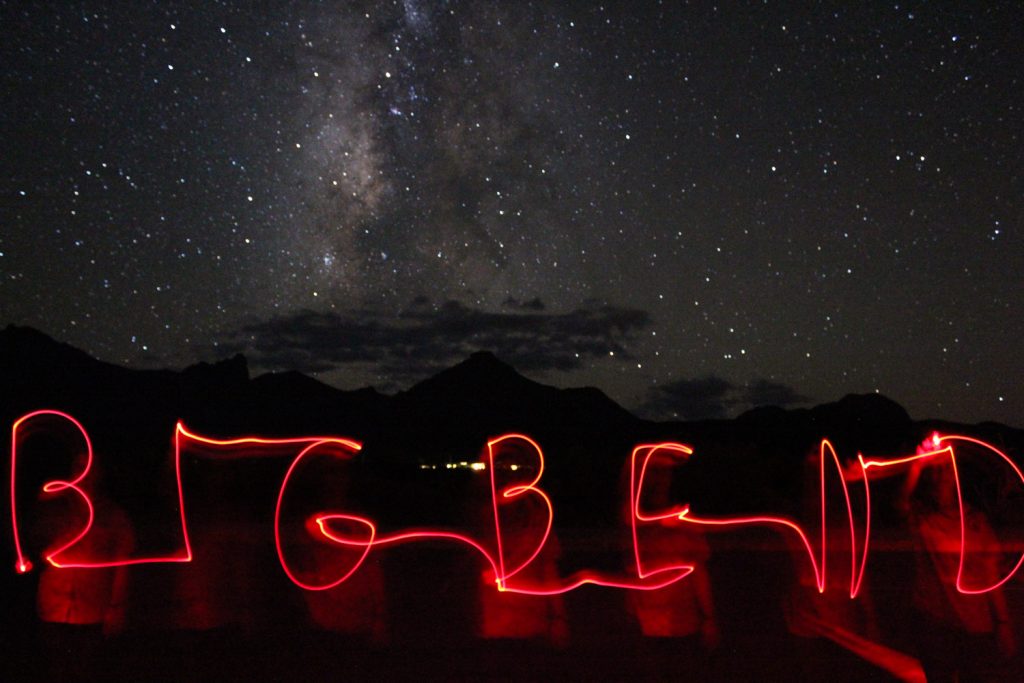
One of the most remote, largest and least-visited national parks in the contiguous U.S., Big Bend National Park boasts spectacular night skies.
In fact, of all national parks in the lower 48 states, this one has the least amount of light pollution. You might, therefore, conclude that this is the best national park for stargazing.
Located on the U.S.-Mexican border, the park protects a “big bend” in the Rio Grande in a wild area miles away from the nearest large city. Besides night sky watching, the park is also famous for its world-class hiking, camping, boating and bird watching.
Big Bend National Park takes measures to keep light pollution to an absolute minimum within the park. Total elimination of light pollution is the goal, which will partly be realized by installing shielded lighting.
Black Canyon of the Gunnison National Park, Colorado
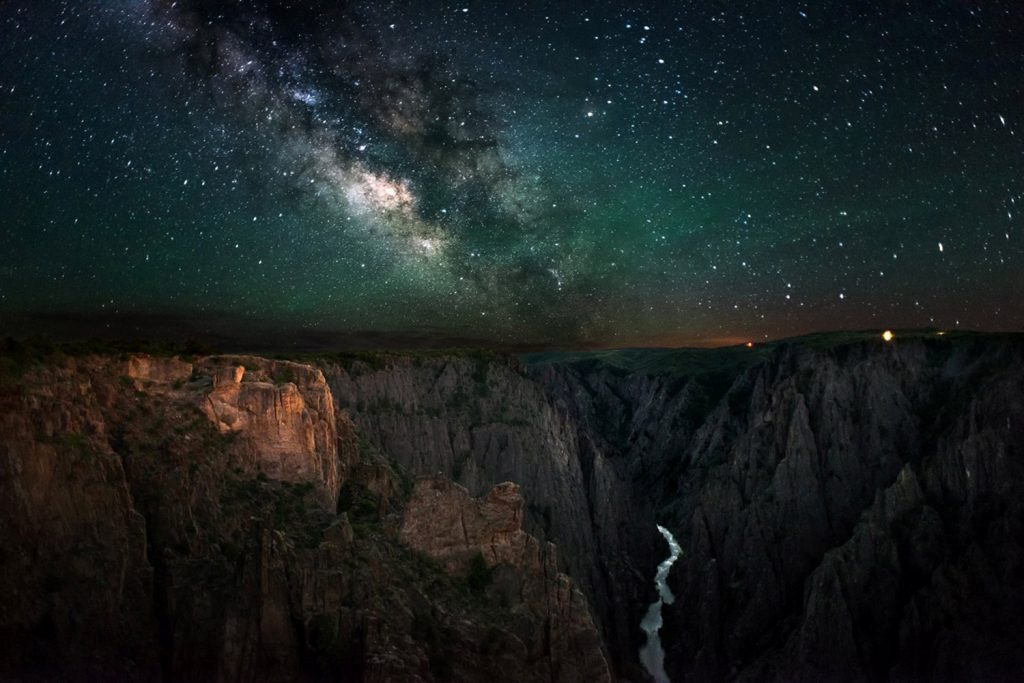
Centered on the Black Canyon, an awesome chasm carved by the Gunnison River, this park has some of the best night sky viewing in national parks in America.
Situated in western Colorado, Black Canyon of the Gunnison National Park consists of federally protected lands, as well as private property used for agricultural purposes.
This keeps development at a bare minimum, while the park’s commitment to responsible lighting contributes to its status as an International Dark Sky Park.
This is one of the best places in America to see the Milky Way, the park preserving what’s sometimes described as a “prehistoric night sky”. The only artificial lighting in Black Canyon of the Gunnison National Park is for safety purposes. Much of it is timed with motion detectors.
Bryce Canyon National Park, Utah
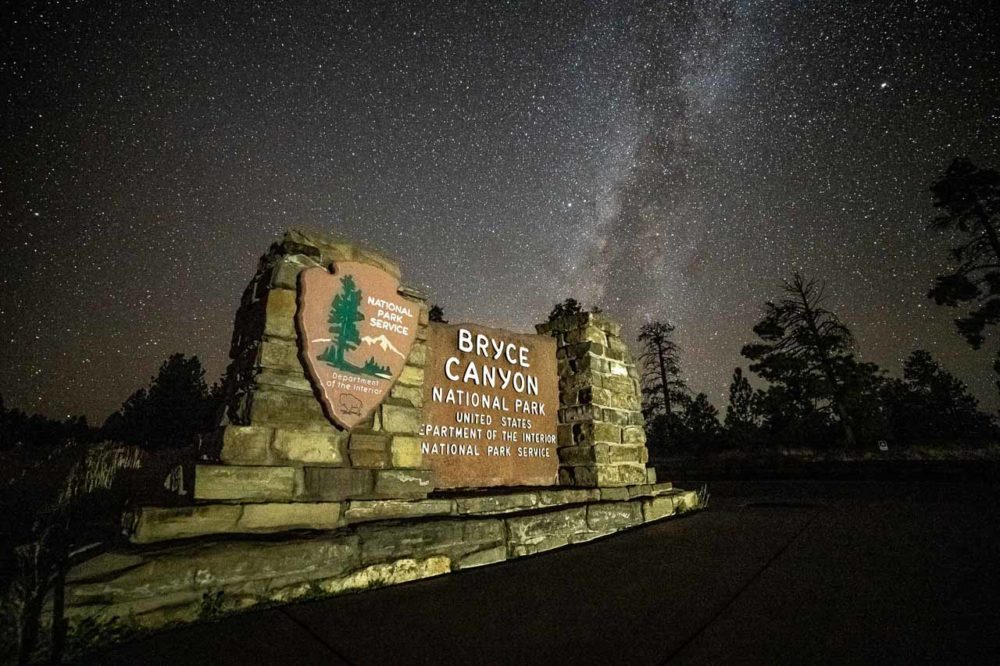
The highest “step” on the Grand Staircase, a massive series of plateaus and canyons that descend toward the Grand Canyon, Bryce Canyon National Park is home to some of the darkest skies in America.
The park’s clean and thin air, high elevation and remote location all contribute to its pristine night skies, making it one of the best national parks for stargazing. During clear weather and a new moon, you can see literally thousands of stars and the glorious band of the Milky Way.
According to the park’s website, “On a clear dark night, you can see 2.2 million light years or 527,000,000,000,000,000 miles to the Andromeda Galaxy.”
There are several excellent places to admire the spectacular night sky in Bryce Canyon National Park. The many overlooks at Bryce Amphitheater, especially Sunrise Point, Sunset Point and Inspiration Point, offer undisturbed, panoramic views of the famous hoodoos below and the Milky Way above.
Canyonlands National Park, Utah
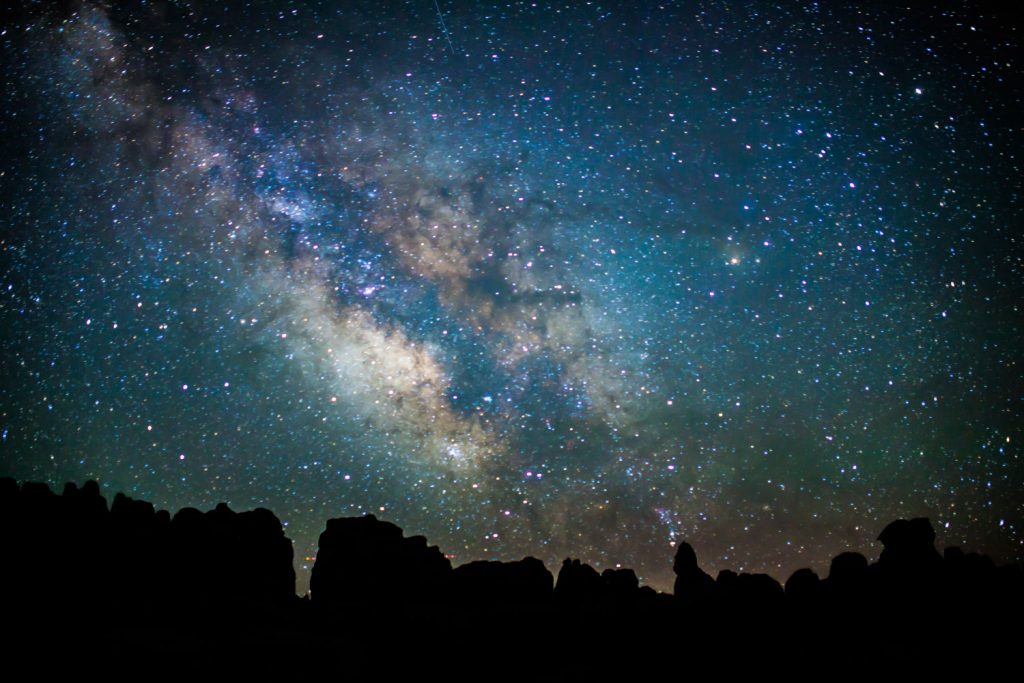
The Colorado Plateau is home to some of the darkest national parks in America. Far removed from large urban areas, they’re oases of darkness. Besides their immense cultural value and spectacular landscapes, they also include some of the best national parks to see the Milky Way.
Especially Canyonlands National Park, in all its variety and sheer wildness, boasts some epic night skies.
Few places are more humbling and impressive than a clear, moon-less night in Canyonlands. You can see hundreds of stars just with the naked eye, while basic binoculars might even show you the rings of Saturn.
For the best stargazing in Canyonlands National Park, I suggest camping at the Island in the Sky Campground or at The Needles Campground.
Alternatively, the park is also a quick drive from nearby Moab, the gateway town to both Canyonlands and Arches National Park.
Capitol Reef National Park, Utah
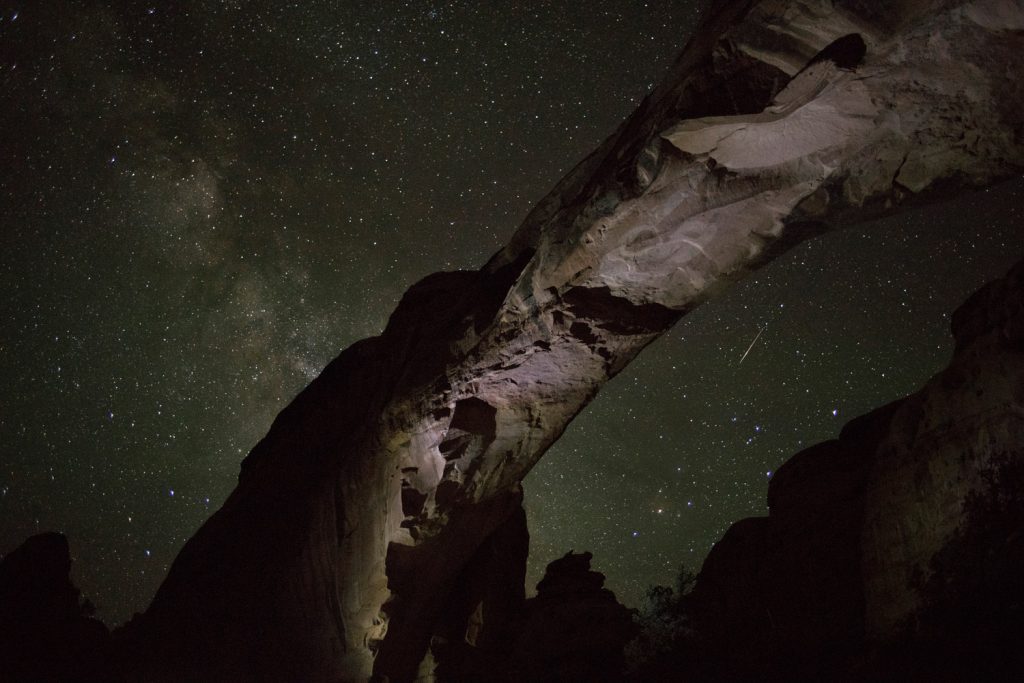
The middle one of the five national parks in Utah, Capitol Reef National Park’s remoteness provides some of the best night sky viewing opportunities in the American West.
Much of the Capitol Reef landscapes are higher than 7,000 feet and the desert air is dry and transparent, which results in low fog and no clouds. There are few towns in the area and light pollution is virtually non-existent.
While the best star viewing in Capitol Reef is in its backcountry, you don’t necessarily need to venture far from Route 12, an All-American Scenic Byway that cuts through the middle of the park.
Simply pull off the road at night and look up. You’ll be greeted by a starry display that’ll engrave itself in your memories.
Death Valley National Park, California
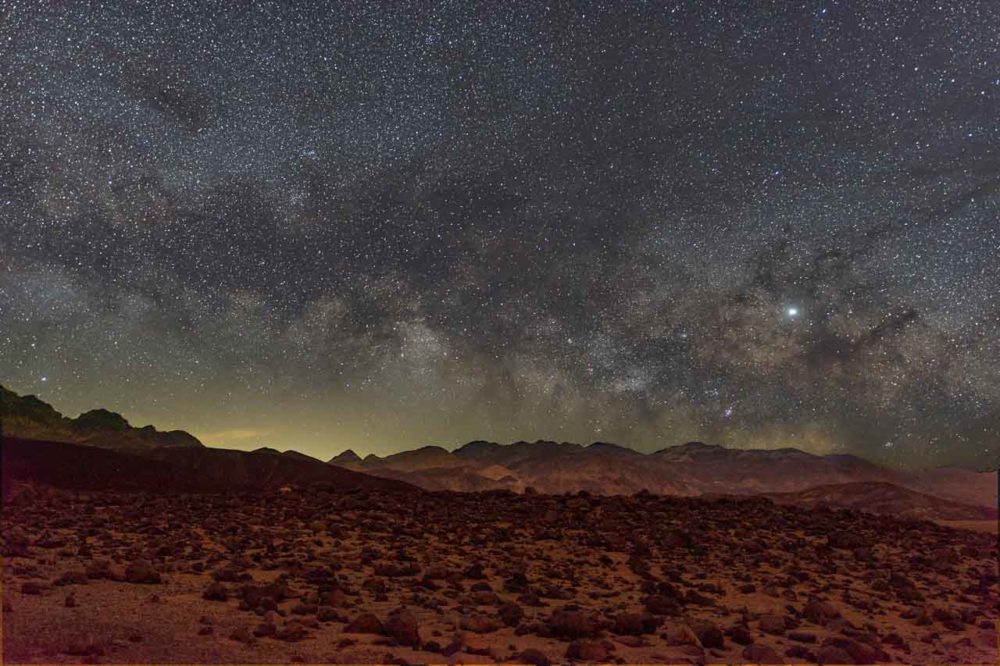
Due to its enormity and emptiness, Death Valley National Park is one of the greatest national parks for stargazing in America.
There are no towns within this gigantic park, only campgrounds and a couple of tourist areas with accommodations and other services. The rest is just empty desert flat, mountain range and sand dune.
Nights in Death Valley are pitch-black, except for the moon and hundreds of twinkling stars above.
The National Park Service has improved outdoor lighting at the main hubs of Stovepipe Wells and Furnace Creek in order to reduce both sky glow and energy consumption.
You can enjoy a phenomenal Death Valley night sky right from your campsite or, for example, go for a night hike in places like Badwater Basin, the Mesquite Flat Sand Dunes or Harmony Borax Works.
Glacier National Park, Montana
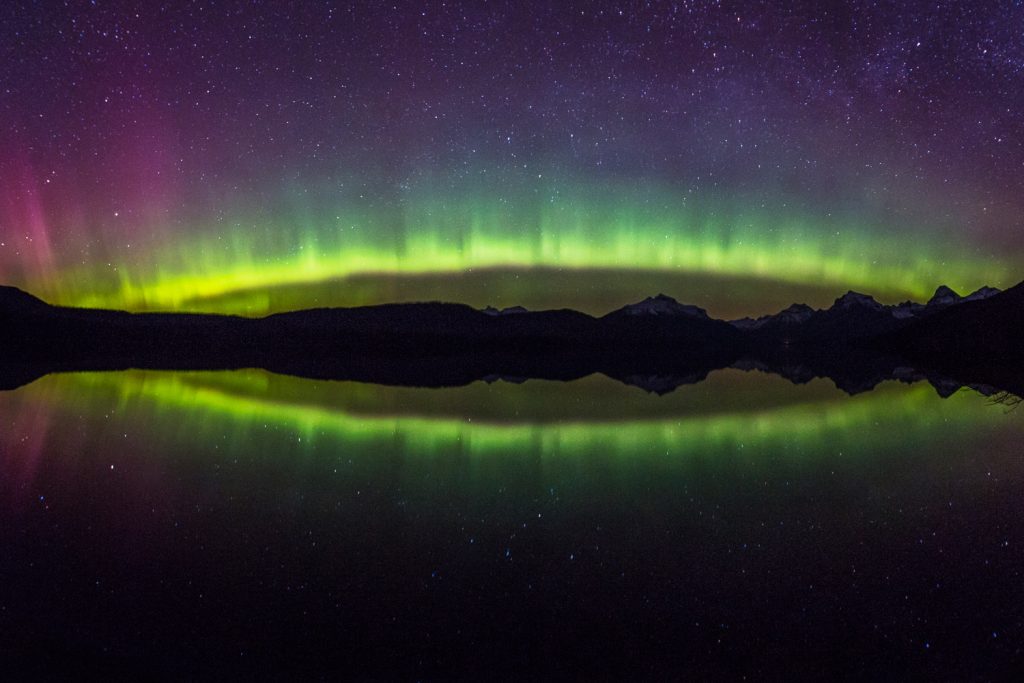
Part of the cross-border twin park known as the Waterton-Glacier International Peace Park, Glacier National Park is in northern Montana, on the Canadian border. Its Canadian counterpart is Waterton Lakes National Park.
A UNESCO World Heritage Site, Glacier is one of America’s greatest national parks for many reasons—from scenic drives to waterfalls and wildflowers.
When it comes to star viewing in national parks, too, Glacier National Park is one of the best. The Waterton-Glacier complex is the world’s first International Dark Sky Park that spans two countries, a designation that is only possible thanks to both parks’ commitment to strict objectives to preserve their incredibly dark night skies.
Various night sky programs take place in Glacier every summer, such as “Half the Park Happens After Dark” and “Here Comes the Sun”.
Additionally, Glacier is also one of the few national parks in the lower 48 states where you can occasionally see the Northern Lights. That, of course, adds an entirely different dimension to your national park stargazing experience.
Grand Canyon National Park, Arizona
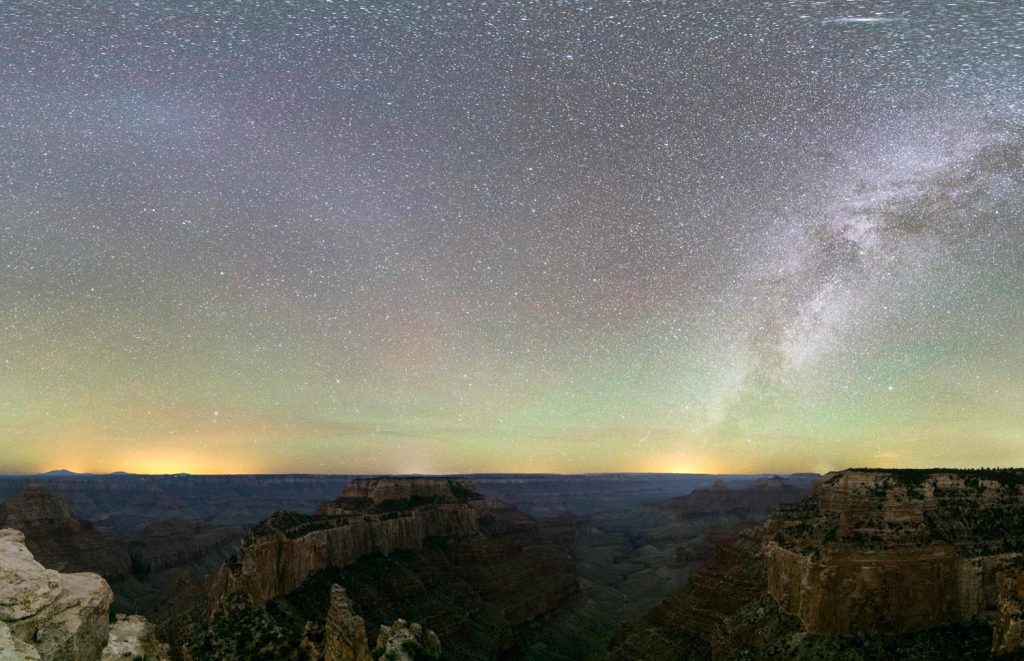
One of America’s greatest national parks, a natural and national icon unlike any other, Grand Canyon National Park is spectacular beyond words.
During the day, visitors gaze into one of the world’s largest river gorges with open mouths, while at night, they’re treated to a star-filled firmament of equal beauty.
Night sky watching at the Grand Canyon is also super-easy. All along the Rim Trail and scenic Desert View Drive, you’ll find accessible overlooks.
My personal favorites are Hopi Point and Mohave Point on the Rim Trail, and Grandview Point and the Desert View Watchtower on Desert View Drive.
Great Basin National Park, Nevada
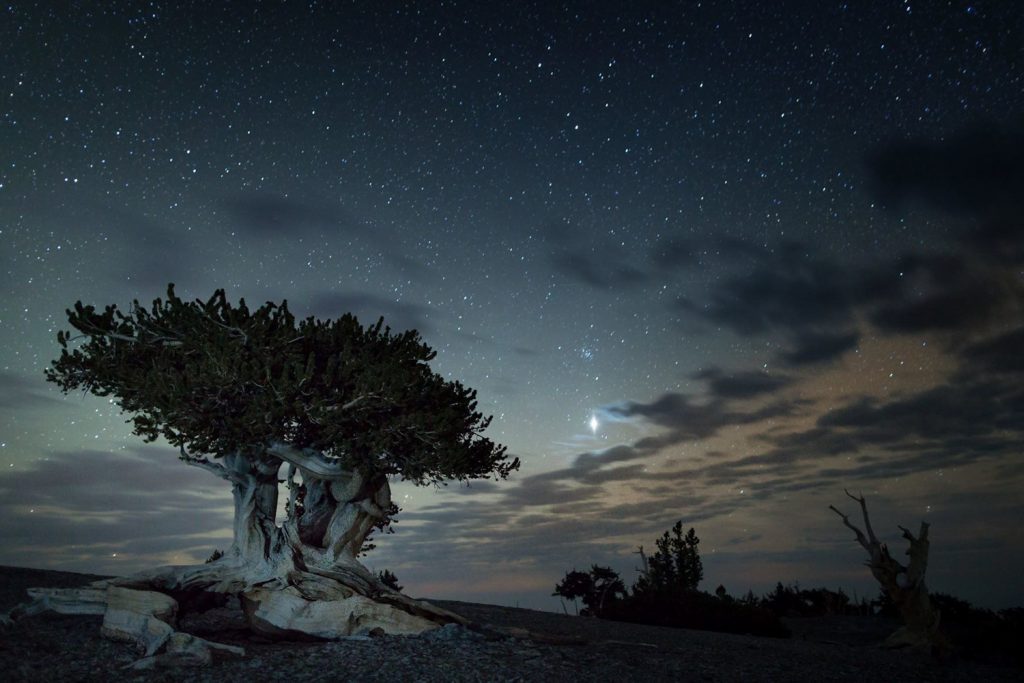
One of the absolute best places for astronomy in national parks, Great Basin National Park in eastern Nevada is unparalleled when it comes to sheer numbers of stars and other galactic objects.
An International Dark Sky Park since 2016, this park, a great destination both both Salt Lake City and Las Vegas, is home to one of America’s darkest night skies.
Because of the park’s high elevation, low humidity and remote location, stargazing is sensational here.
On a moon-less and clear night in Great Basin National Park, the naked eye can see thousands of stars, star clusters, meteors, satellites, the Milky Way and the Andromeda Galaxy, and five of the eight planets in our own solar system.
Stargazing in Great Basin National Park is epic everywhere in the park. Popular locations include Mather Overlook on the scenic drive and the Baker Archaeological Site.
Great Sand Dunes National Park, Colorado
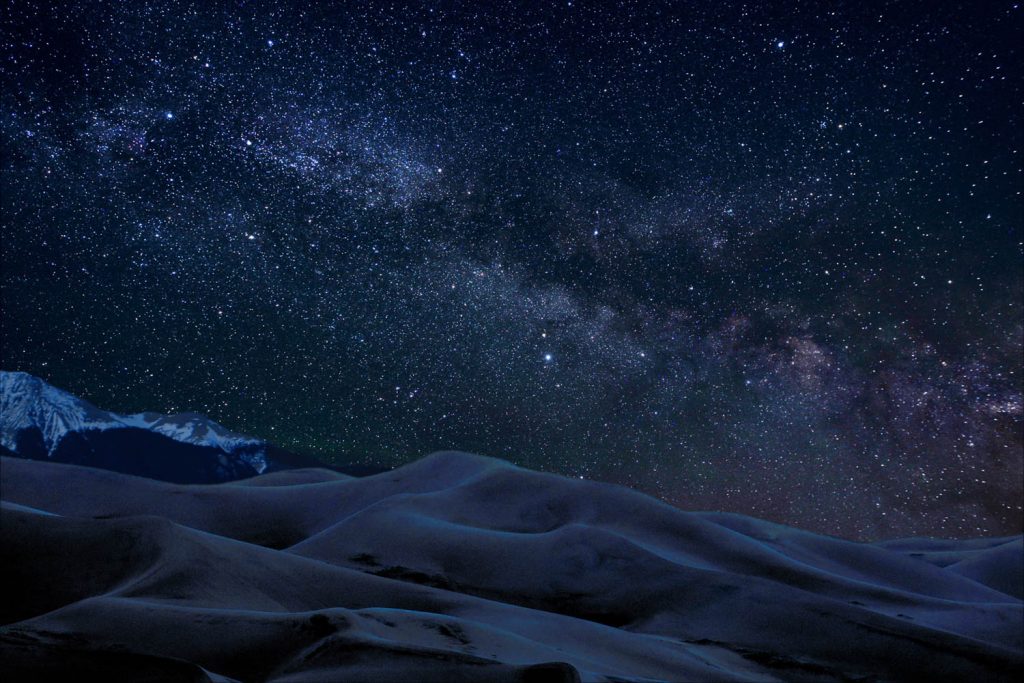
“Half the park is after dark!” is what the Great Sand Dunes National Park website says. Exploring and playing in North America’s highest sand dunes during the day is a bunch of fun.
You can go sand boarding, sledding or simply hiking, but nights are equally as amazing in this remarkable park in southern Colorado.
If the moon’s out, a nightly walk in these massive sand dunes is nothing short of magical. The best stargazing in Great Sand Dunes National Park, however, is during the new moon.
Without the moon in the sky, the stars really get to shine.
You can admire the nightly spectacle from your campsite, which, when chosen carefully, overlooks the sand dunes and the mountains behind them.
I do strongly recommend, though, to go for a mid-night wander in the dunes. It’s an unforgettable experience.
Joshua Tree National Park, California
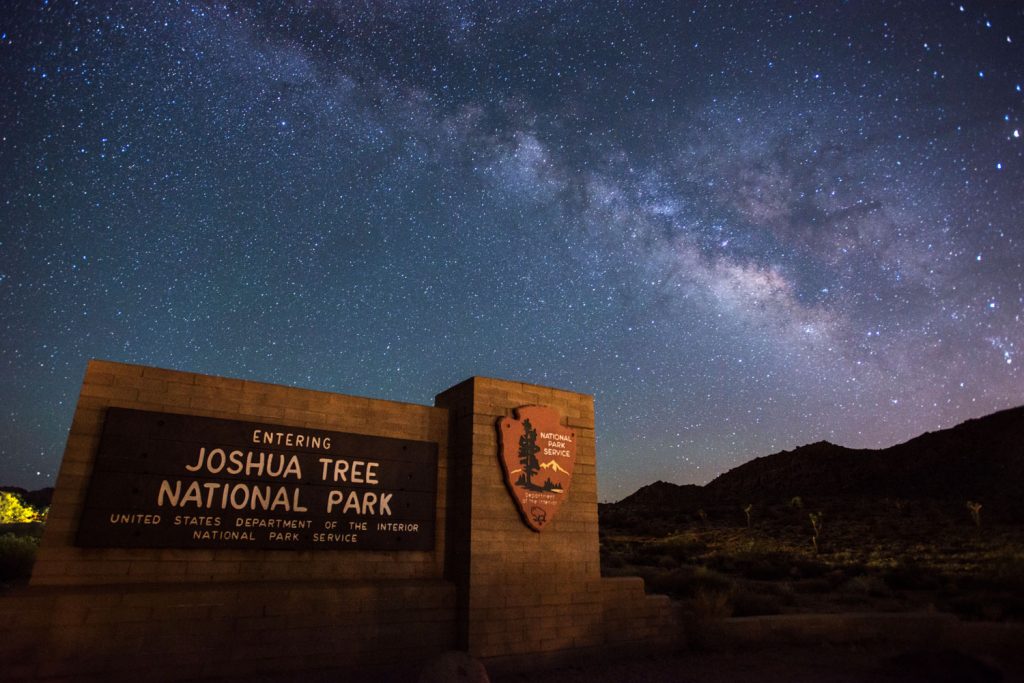
The Joshua Tree National Park website poetically says:
The night sky is a glittering dome peppered with stars, planets, and passing meteors—but most people can no longer see it.
Southern California’s Joshua Tree National Park is one of the best places in America for stargazing. An expanse of scenic desert landscapes dotted with iconic Joshua trees and huge boulders, this is one of my personal favorite national parks for stargazing.
You can enjoy a magnificent night sky pretty much everywhere in the park, from your very campsite to roadside pullouts and atop a boulder.
Mesa Verde National Park, Colorado
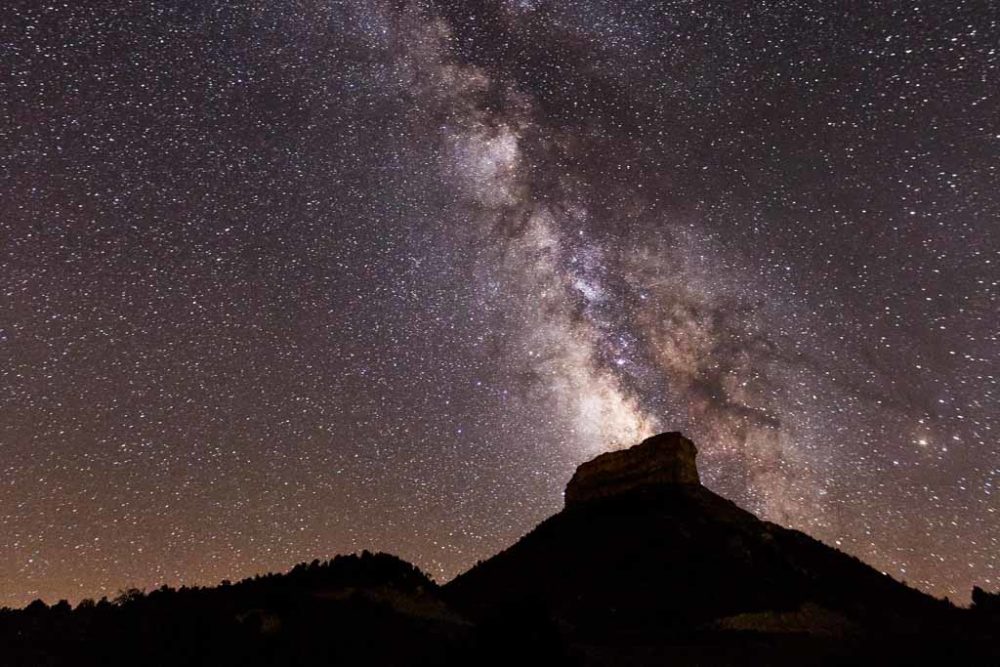
Designated an official International Dark Sky Park in April 2021, Mesa Verde has the distinction of being the 100th such park in the world.
Established in 1906, Mesa Verde National Park was the first national park created specifically to protect and preserve archaeological sites.
Encompassing over 52,000 acres, the park is home to almost 5,000 heritage sites from the Ancestral Puebloans, who lived there for more than 700 years—from 600 to 1300 AD.
Those 5,000 known sites include no fewer than 600 cliff dwellings. This collection is so extraordinary that Mesa Verde National Park also enjoys UNESCO World Heritage status.
Additionally, the exceptionally dark night skies in Mesa Verde National Park—thanks to the park’s high elevation, remote location and dry climate—are an important part of its cultural landscape. They’re especially significant to the 26 Native American tribes affiliated with the park.
Because there are no large cities in the entire Four Corners area, Mesa Verde offers fantastic stargazing opportunities. The night sky is clear and filled with stars on most nights, allowing you to easily see the Milky Way, as well as other celestial objects.
You can enjoy the Mesa Verde National Park night sky everywhere in the park, but the very best star viewing locations are the Far View Lodge, the Montezuma and Mancos Overlooks, and the Morefield Campground.
Petrified Forest National Park, Arizona
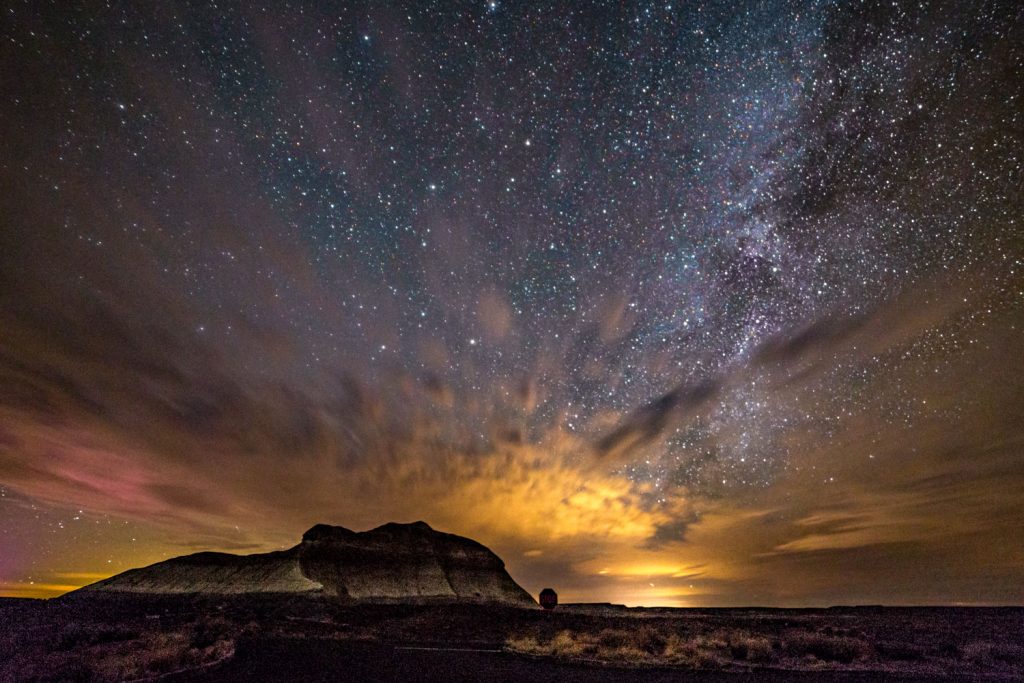
Even though more than half a million people visit Petrified Forest National Park every year—many of them while driving Route 66 or on an Arizona national parks road trip—only a small percentage of them get to enjoy the marvelous night sky.
That’s because this park is closed from dusk to dawn. Only those who go for an overnight backpacking trip in the Painted Desert or other wilderness areas can see the stars in Petrified Forest.
There’s nothing quite like hiking into the desert wilderness, pitching a tent and being humbled by an overwhelming number of stars.
Voyageurs National Park, Minnesota
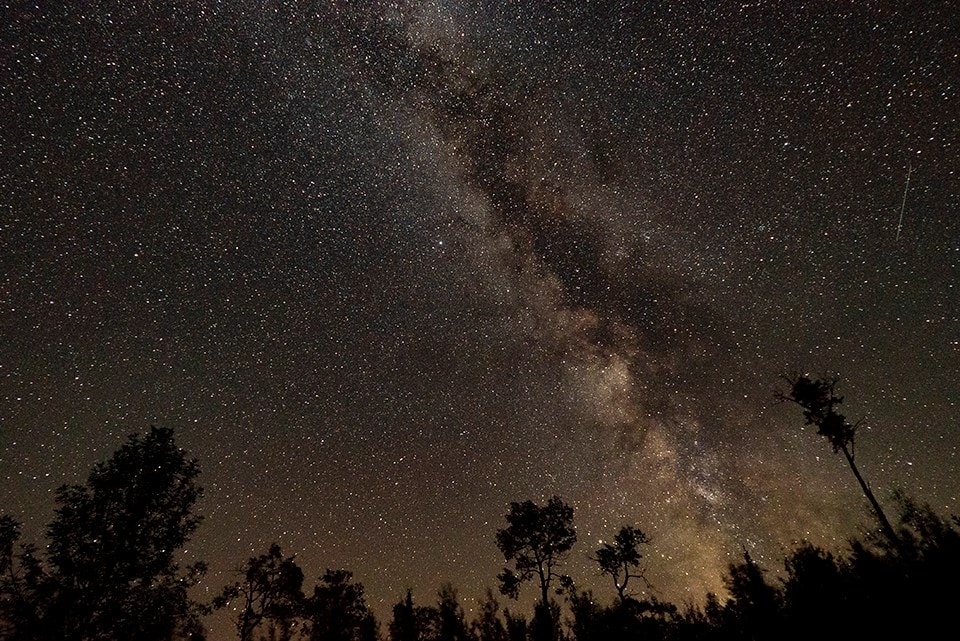
A sprawling 218,000-acre expanse of lakes, waterways, islands and forests, Voyageurs National Park is one of the darkest places in the Midwest. The park is located in northern Minnesota, the easternmost of the International Dark Sky national parks.
In order to preserve these dark skies in the heart of North America, the park follows a thorough Lighting Management Plan, an effort that was recognized by the International Dark-Sky Association with the official designation of Voyageurs as an International Dark Sky Park in December of 2020.
Thanks to its wide open spaces and horizons, you can stargaze virtually everywhere in the park. Popular spots are the Beaver Pond Overlook, the Voyageurs Forest Overlook and Kettle Falls Dam.
Additionally, the park’s endless lakeshores, forest clearings and campsites are provide excellent views of the Milky Way and other stellar objects.
In winter, Voyageurs National Park also offers great Northern Lights viewing opportunities.
Zion National Park, Utah
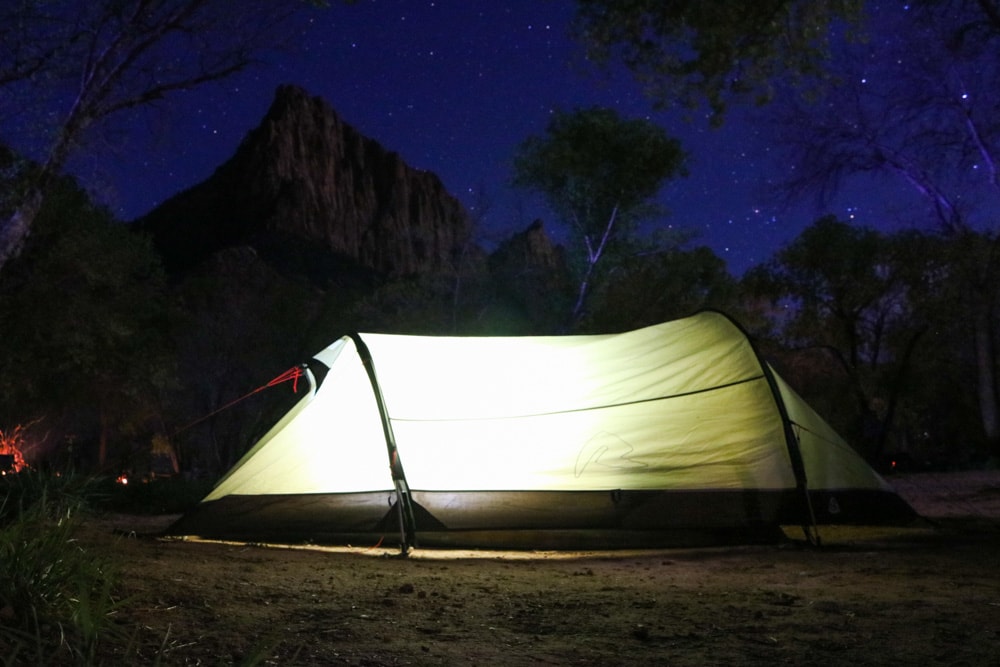
The certification of Zion National Park as an International Dark Sky Park on June 3, 2021 meant that all five national parks in Utah are now official Dark Sky Parks.
This International Dark Sky Park certification is an acknowledgment of Zion National Park’s high-quality night skies, as well as initiatives like installing night sky-friendly lighting.
It also provides great opportunities for enhanced visitor experiences through astronomy-based interpretive programming.
“Zion National Park is committed to conserving the park’s night skies for all future generations and to educating visitors about the values of this important resource.”
JEFF BRADYBAUGH, ZION NATIONAL PARK SUPERINTENDENT, 2021
After the sun has set in Zion Canyon, setting the cliffs ablaze in vibrant oranges and reds, a steady stream of stars start shimmering in the sky. Seeing the Milky Way twinkle above the park’s towering rock formations is one of the best experiences in the national parks system.
You can enjoy some sensational stargazing in Zion National Park at places like the Pa’rus Trail and the Museum patio, which is the park’s official night sky viewing area.
Both the South and Watchman campgrounds also offer open views of the night sky.
Other Amazing National Parks for Stargazing
Although they’re not (yet) designated as an International Dark Sky Park, you can also enjoy some amazing stargazing at the following national parks.
- Acadia National Park, Maine
- Badlands National Park, South Dakota
- Crater Lake National Park, Oregon
- Haleakala National Park, Hawaii
- Lassen Volcanic National Park, California
- Olympic National Park, Washington
- Yellowstone National Park, Wyoming, Idaho and Montana
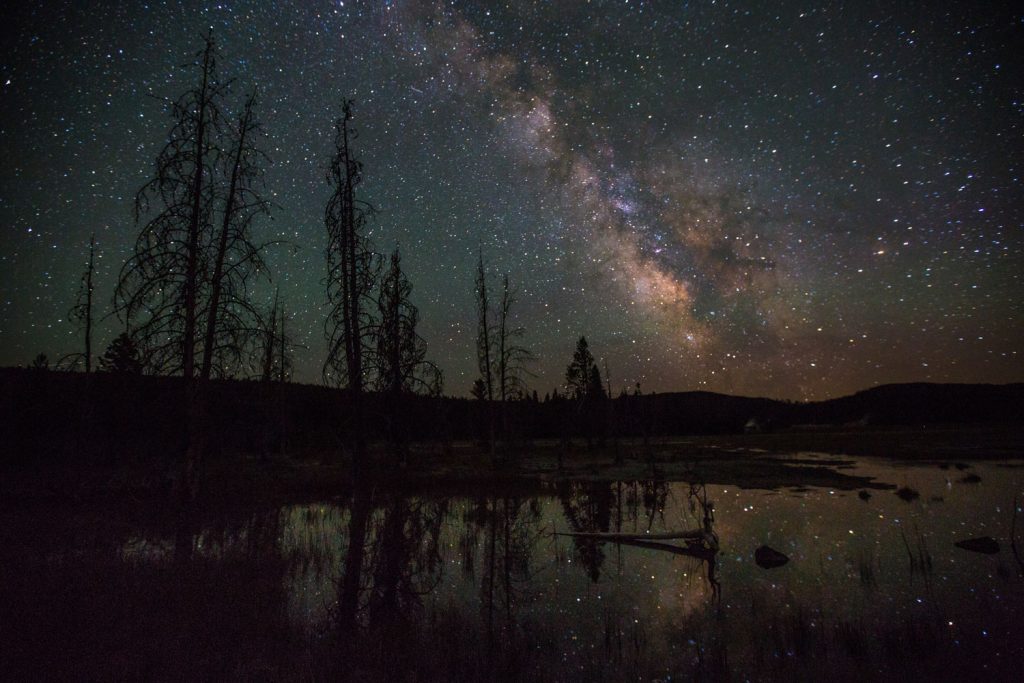
Tips for Stargazing in National Parks
All these official International Dark Sky national parks provide fantastic star viewing opportunities throughout the entire year. There are, however, a few things you can do to increase your night sky watching success even more.
- Visit when it’s a new moon.
- Leave towns or developed areas.
- Stay out longer than 30 minutes, which is the time your eyes need to adjust to the darkness.
- Bring a chair.
- Watch where you step.
- Put red cellophane on your flashlight or headlight to minimize its effect on your eyes.
- Bring binoculars.
You can find everything (else) you need to know about stargazing in national parks on this elaborate National Park Service page.
Full List of U.S. Dark Sky Parks
There are currently a dozen official International Dark Sky national parks in America. In addition to those, there are literally dozens of other parks that are fantastic to see the Milky Way.
They range from state parks to national monument and are spread all across the country, from Virginia to Idaho and from Michigan to Florida. So, chances are there’s one or more officially designated night sky viewing areas somewhere near where you live.
This is the complete list of International Dark Sky Parks in America.
- AMC Maine Woods, Maine
- Antelope Island State Park, Utah
- Anza-Borrego Desert State Park, California
- Arches National Park, Utah
- Big Bend National Park, Texas
- Big Bend Ranch State Park, Texas
- Big Cypress National Preserve, Florida
- Black Canyon of the Gunnison National Park, Colorado
- Bryce Canyon National Park, Utah
- Canyonlands National Park, Utah
- Capitol Reef National Park, Utah
- Craters of the Moon National Monument, Idaho
- Capulin Volcano National Monument, New Mexico
- Cedar Breaks National Monument, Utah
- Chaco Culture National Historical Park, New Mexico
- Cherry Springs State Park, Pennsylvania
- Chiricahua National Monument, Arizona
- Clayton Lake State Park, New Mexico
- Copper Breaks State Park, Texas
- Craters Of The Moon National Monument, Idaho
- Curecanti National Recreation Area, Colorado
- Dead Horse Point State Park, Utah
- Death Valley National Park, California
- Dinosaur National Monument, Colorado
- Dr. T.K. Lawless County Park, Michigan
- East Canyon State Park, Utah
- El Morro National Monument, New Mexico
- Enchanted Rock State Natural Area, Texas
- Flagstaff Area National Monuments, Arizona
- Florissant Fossil Beds National Monument, Colorado
- Fort Union National Monument, New Mexico
- Fremont Indian State Park, Utah
- Geauga Observatory Park, Ohio
- Goblin Valley State Park, Utah
- Grand Canyon National Park, Arizona
- Grand Canyon-Parashant National Monument, Arizona
- Great Basin National Park, Nevada
- Great Sand Dunes National Park and Preserve, Colorado
- Headlands Park, Michigan
- Hovenweep National Monument, Colorado and Utah
- Jackson Lake State Park, Colorado
- James River State Park, Virginia
- Jordanelle State Park, Utah
- Joshua Tree National Park, California
- Kartchner Caverns State Park, Arizona
- Kissimmee Prairie Preserve State Park, Florida
- Kodachrome Basin State Park, Utah
- Mayland Earth to Sky Park & Bare Dark Sky Observatory, North Carolina
- Mesa Verde National Park, Colorado
- Middle Fork River Forest Preserve, Illinois
- Natural Bridge State Park, Virginia
- Natural Bridges National Monument, Utah
- Newport State Park, Wisconsin
- Obed Wild and Scenic River, Tennessee
- Oracle State Park, Arizona
- Petrified Forest National Park, Arizona
- Pickett CCC Memorial State Park & Pogue Creek Canyon State Natural Area, Tennessee
- Pipe Spring National Monument, Arizona
- Pisgah Astronomical Research Institute, North Carolina
- Prineville Reservoir State Park, Oregon
- Rappahannock County Park, Virginia
- Rockport State Park, Utah
- Salinas Pueblo Missions National Monument, New Mexico
- Sky Meadows State Park, Virginia
- Slumgullion Center, Colorado
- South Llano River State Park, Texas
- Staunton River State Park, Virginia
- Steinaker State Park, Utah
- Stephen C. Foster State Park, Georgia
- Tonto National Monument, Arizona
- Tumacácori National Historical Park, Arizona
- UBarU Camp and Retreat Center, Texas
- Valles Caldera National Preserve, New Mexico
- Voyageurs National Park, Minnesota
- Waterton-Glacier International Peace Park, Montana (and Alberta, Canada)
- Weber County North Fork Park, Utah
- Zion National Park, Utah
More National Park Attractions / Activities
- Best National Parks for Wildlife Watching
- Best National Parks for Wildflowers
- Top Urban National Parks in America
- Most Beautiful National Parks Architecture
- Best National Parks to Visit in Summer
- Best National Parks to Visit in Spring
- Best National Parks to Visit in Winter
- Most Dog-Friendly National Parks in America
- Best National Parks for Fall Foliage
- Best National Parks for Mountain Biking
- Top National Parks for Road Cycling
- Top National Parks for Snowshoeing
- National Parks With Volcanoes in America
- Best National Parks for Weddings and Elopements
